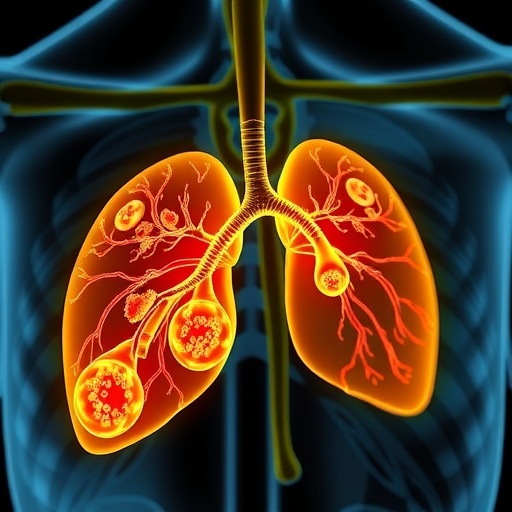Hospitalization in an intensive care unit (ICU) can be a frightening and sometimes traumatizing experience for patients. Although engaging the patient and improving communication among the clinical team can positively impact care and the patient experience, the ICU environment can be a challenging place to engage patients. In new research, led by Brigham and Women's Hospital, researchers tested a structured and technology-centered program that was focused on team communication and patient engagement. They found that this approach was associated with a lower rate of adverse events and improved patient satisfaction. Results of this project, named PROSPECT (Promoting Respect and Ongoing Safety through Patient Engagement Communication and Technology), are published in August issue of Critical Care Medicine.
"Our goal was to shift our clinical thinking from 'What is the matter?' to discovering 'What matters to you?'" said Patricia Dykes, PhD, RN, a senior nurse scientist in the Center for Patient Safety, Research and Practice at BWH and lead author of the paper. "If we can effectively collaborate with our patients and their care partners and engage them in their care, then we have the potential to enhance the care, improve adherence to care plans, positively impact satisfaction rates and reduce healthcare costs."
Researchers developed an intervention to support integrated, multidisciplinary patient-centered communication characterized by shared checklists, health information, and goals of care articulated by both clinicians and patients. The aim of the intervention, which was tested in two medical ICUs at BWH and included 1,075 patients and their care partners, was to reduce adverse events defined as falls, pressure ulcers, catheter-associated urinary tract infections and ventilator-associated events. Secondarily, the team also sought to improve patient and care partners' satisfaction rates, agreement on care plans between patient and providers, and healthcare utilization.
The specific interventions were systems-based and included a 60-min training session for all clinicians involved in the study. The training introduced a standard model for care meant to enhance clinicians' responsiveness to the needs, concerns and expectations of the patients and their care partners as well as training on a web-based toolkit to facilitate team communication and patient engagement. The web-based toolkit included an ICU safety checklist that populated with real-time data from the patient's electronic health record (EHR). The toolkit also included shared care planning and messaging tools accessed by clinicians through the EHR and by patients and care partners through a bedside portal on an iPad. Eighteen percent of patients and care partners used the portal to document their goals of care, their preferences, and to directly communicate.
When compared to a similar group of ICU patients, researchers found that the intervention was associated with a 29 percent reduction in adverse events. The reduction was determined by the drop in adverse events per 1,000 patient days. Patient days are the total number of days for all patients who were admitted for an episode of care, for example, 20 patients in a hospital for 1 day would represent 20 patient days. The rate fell from 59 per 1,000 patient days in the baseline period to 41.9 per 1,000 patient days in the intervention period, driven by a drop in the number of catheter-associated urinary tract infections and pressure ulcers. While researchers are unable to determine which specific component of the intervention drove this reduction, they suspect it is due largely to implementation of the electronic check list, as only a small percentage of patients or care partners participated through the portal.
"We took the paper checklist that is widely used in ICUs across the country and enhanced it with technology. This allowed more patient-specific information to be available to the multidisciplinary group of clinicians that were making daily decisions about a patient's care while they executed the checklist," said Dykes. "For example, if you're deciding whether or not to remove a catheter or a central line, it is extremely helpful to know the type of catheter and when it was put in. When using a paper check list, that information is not available, but if you transition that checklist to a web-based tool that pulls data from a patient's electronic health record, then you can make a much more informed decision."
Researchers also found an improvement in patient satisfaction scores, which were captured through a survey of a subsample of patients and care partners. Ninety-three percent of patients in the intervention who responded to the survey assigned a top score to their overall hospital rating score compared to 71.8 percent of patients in the baseline group. Care partner satisfaction also improved, from 84.3 to 90 percent. Changes in concordance of the care plan between the care team and patients was not observed and resource utilization did not significantly change between the intervention and baseline groups.
"Daily use of the web-based safety checklist enables review of the critical care safety elements; patient goals, preferences, and priorities were systematically addressed. This review translated into routinely focusing on patients' concerns, updating the care plan and reviewing adherence with standard critical care safety elements," the authors write.
###
Dykes and colleagues are now working to implement the use of the web-based checklist in ICUs at BWH and Brigham and Women's Faulkner Hospital.
This research was supported, in part, by The Gordon and Betty Moore Foundation.
Brigham and Women's Hospital (BWH) is a 793-bed nonprofit teaching affiliate of Harvard Medical School and a founding member of Partners HealthCare. BWH has more than 4.2 million annual patient visits and nearly 46,000 inpatient stays, is the largest birthing center in Massachusetts and employs nearly 16,000 people. The Brigham's medical preeminence dates back to 1832, and today that rich history in clinical care is coupled with its national leadership in patient care, quality improvement and patient safety initiatives, and its dedication to research, innovation, community engagement and educating and training the next generation of health care professionals. Through investigation and discovery conducted at its Brigham Research Institute (BRI), BWH is an international leader in basic, clinical and translational research on human diseases, more than 3,000 researchers, including physician-investigators and renowned biomedical scientists and faculty supported by nearly $666 million in funding. For the last 25 years, BWH ranked second in research funding from the National Institutes of Health (NIH) among independent hospitals. BWH is also home to major landmark epidemiologic population studies, including the Nurses' and Physicians' Health Studies and the Women's Health Initiative as well as the TIMI Study Group, one of the premier cardiovascular clinical trials groups. For more information, resources and to follow us on social media, please visit BWH's online newsroom.
Media Contact
Lori Schroth
[email protected]
617-525-6374
@BrighamWomens
http://www.brighamandwomens.org
http://dx.doi.org/10.1097/CCM.0000000000002449




